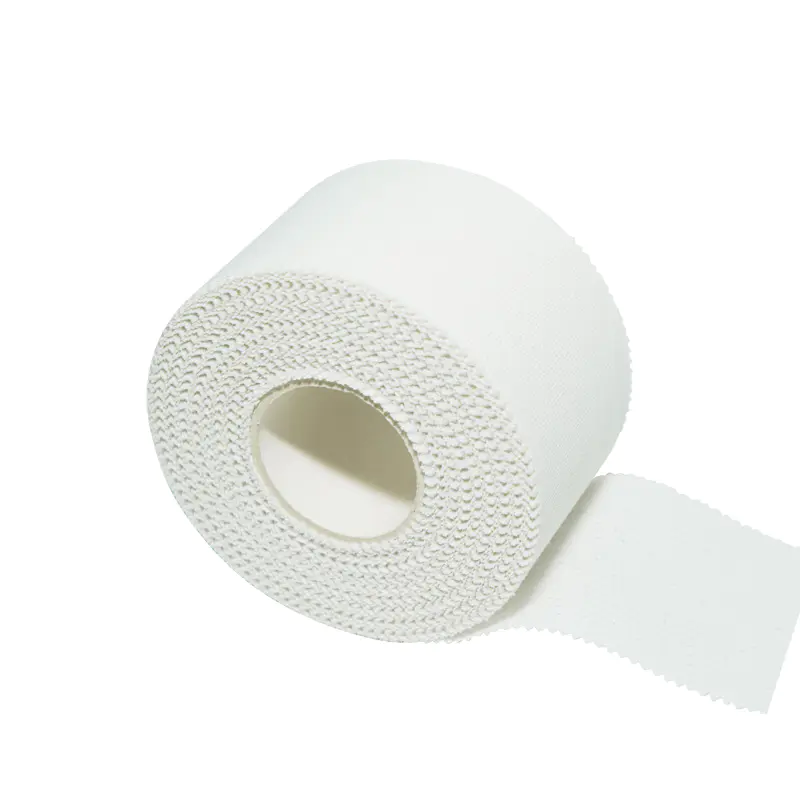In the world of hockey, few accessories are as essential as hockey tape. To a beginner, it might just seem like a simple roll of adhesive, but to a seasoned player, it is an indispensable tool—a silent, yet crucial connection between the stick, the gear, and the player.
Types of Hockey Tape
Hockey tape is not a one-size-fits-all product. Different types serve different purposes, and players select them based on their specific needs:
- Cloth Tape: This is the most common and classic type. Made from durable fabric with a strong adhesive, it’s primarily used for wrapping the blade and the handle (knob) of the stick. It provides excellent friction and protection. It typically comes in black and white, but a wide variety of colors and patterns are available, allowing players to personalize their sticks.
- Shin Guard Tape: This tape, often made of a stretchable plastic, is mainly used to secure shin guards and hockey socks. Its key features are elasticity and stickiness, which ensure that the gear stays in place during an intense game without feeling too tight or uncomfortable.
- Friction Tape: This type of tape is a cloth tape with double-sided adhesive for an even stronger grip. While not as common as cloth tape, some players use it to enhance the friction on their stick handles for better puck control.
- Grip Tape: This tape is specifically designed for the stick handle and often has a spongy or rubbery texture. Compared to traditional cloth tape, it provides a more comfortable grip and can reduce wear on the palms of a player’s gloves.

The Uses of Hockey Tape
The function of hockey tape extends far beyond just “sticking things together.” It plays multiple critical roles in the sport:
- Enhancing Puck Control and Shot Accuracy: Wrapping a hockey stick’s blade with hockey tape increases the friction between the blade and the puck. This allows players to “cradle” the puck more effectively, improving the precision of passes and shots. A smooth blade surface makes it difficult to control the puck accurately, while the rough surface created by the tape gives the player much more command.
- Protecting the Stick: Hockey is an intense and physical game, and the stick’s blade is constantly rubbing against the ice, the puck, other sticks, and skates. Taping the blade provides a layer of protection for the expensive stick, preventing the edges from chipping or wearing down and extending the stick’s lifespan.
- Improving Grip and Preventing Slippage: Wrapping hockey tape at the end of the stick handle to form a “knob” prevents the stick from slipping out of a player’s hand during high-speed motion or powerful shots. Some players also use a “candy cane” wrap style, applying tape to the middle section of the stick to improve overall grip.
- Securing Gear: For hockey players, the stability of their gear is vital. Using hockey tape to secure shin guards and hockey socks ensures they don’t shift during the game, allowing players to perform at their best with the confidence that their safety is accounted for.
The Art of Taping: Personal Style and Science
How a player wraps their hockey tape is a unique art form, and every player has their own preference. Some prefer to wrap from the heel of the blade to the toe, believing it helps them “scoop” the puck more effectively. Others do the opposite.
The choice of color is also a strategic decision. Some forwards prefer black tape, thinking it makes the puck on their stick less visible against the white ice, potentially confusing the goalie. On the other hand, some defensemen favor white tape, as it allows them to more easily see the puck’s position on their blade in their peripheral vision.
In essence, hockey tape is a seemingly small but powerful detail in the world of hockey. It’s not just a tool for protecting equipment; it’s a vital component for improving performance and expressing personal style. For every player, finding the perfect wrapping technique and tape type is the first step on their journey on the ice.








